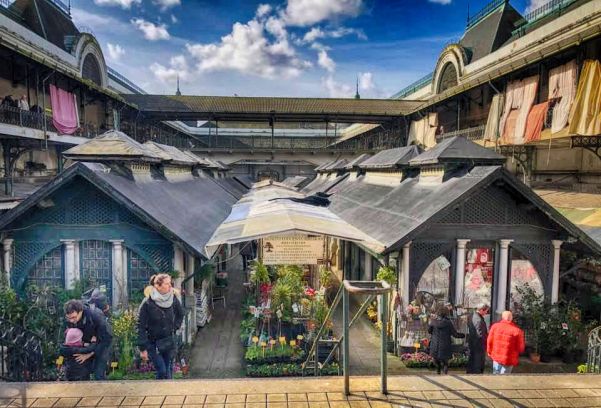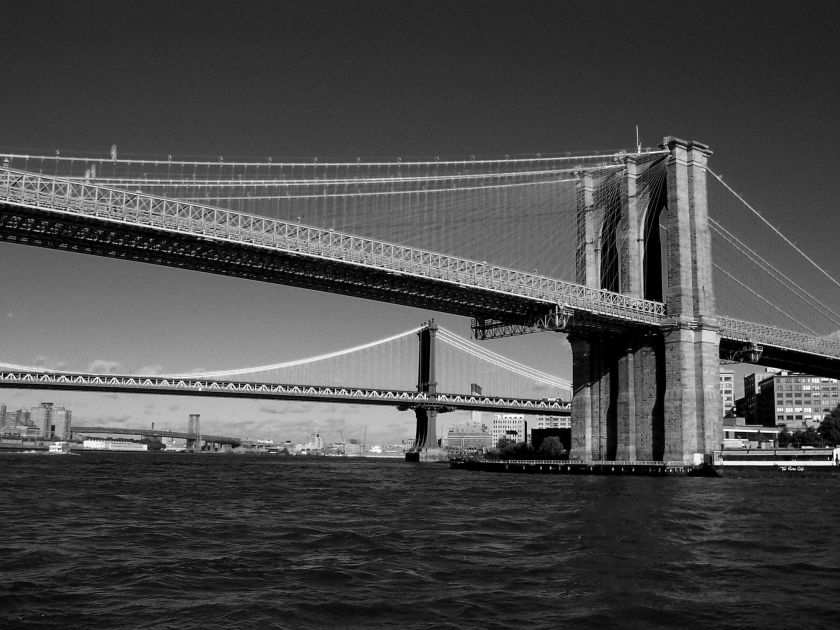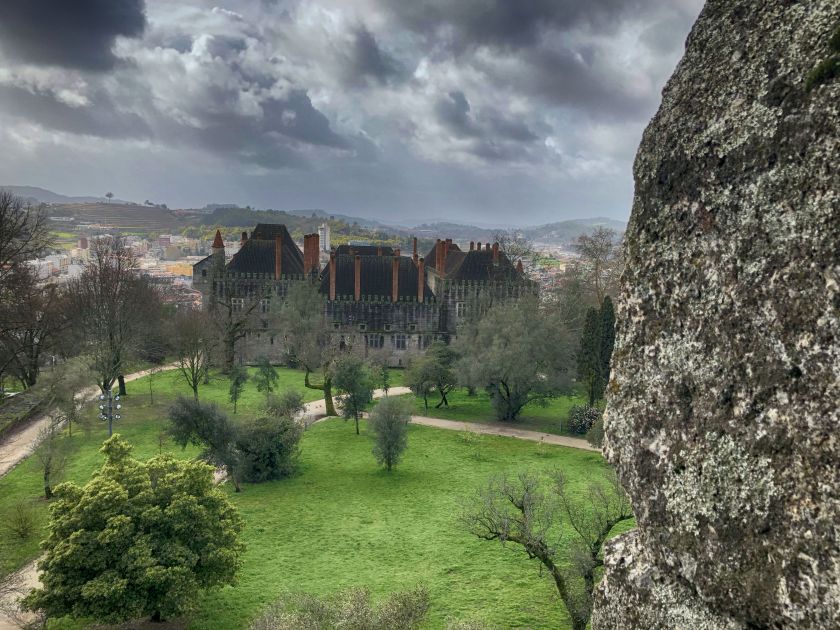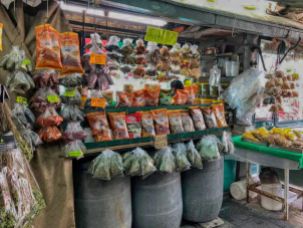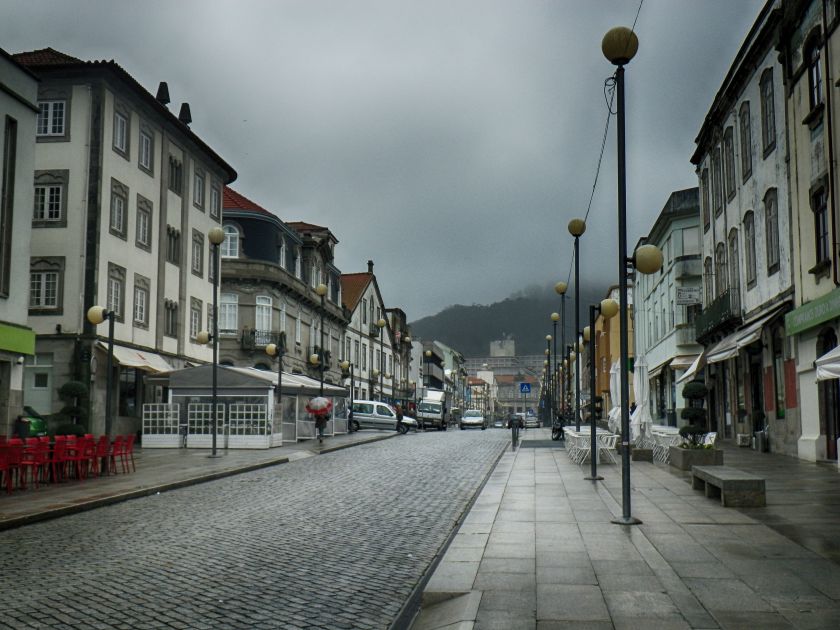Porto is Portugal’s second largest city and has long been an important part of the country’s history. There have been people here since the time of the Celtiberians, and the Roman name Portus Cale gave Portugal its name. Porto is an interesting, bustling city with a lot to do. We spent two days in the city on our visit to Portugal.
We stayed outside the historic center of the city because driving in Porto is not for the faint of heart. Our hotel, Hotel Porto Nobre, was a beautiful old house north of the city and with convenient access to the historic city center.

The purpose of our visit was to decide where we want to live when we relocate to Portugal. It was pretty evident that Porto was not what we’re looking for. Porto is a large and busy city and we’re looking for a smaller place with a much slower pace. That being said, we enjoyed our time in the city.
The historic center of Porto is a UNESCO World Heritage Site, and most of what we wanted to see and do are in the city center. We took the bus from the hotel to the Avenida dos Aliados, generally regarded as the heart of the city. It’s a beautiful place to start our tour of Porto, with magnificent mansions and buildings lining the avenue. The north end of the square is topped by the beautiful City Hall.

Praça da Liberdade sits at the southern end of the avenue. This is a great place for photos of the avenue. A statue of Dom Pedro IV is quite beautiful as well. The architecture and the statue give an old European feel to the square.

We decided to have lunch at one of the many restaurants that line the avenue. This was our chance to try Porto’s most famous delicacy, the francesinha. Frequently mentioned as one of the best sandwiches in the world, the “little frenchie” has ham, sausage, beef and cheese, all smothered in a secret sauce. This is not a sandwich you can eat with your fingers. It is quite good.

After the francesinha, we needed a long walk. Our first stop was São Bento Railway Station, one of the most beautiful railway stations in the world. The interior is covered with about 20,000 azulejos painted by Jorge Colaço between 1905 and 1916. The azulejos depict events from Portugal’s history.

Livraria Lello, the famous bookstore, one of the world’s most beautiful booksellers,was our next stop. It is a magnificent work of art. The exterior is art nouveau. The interior is highlighted by the staircase that reportedly was the inspiration for the moving staircases in J.K. Rowlings’s Hogwarts. Unfortunately, the interior is so crowded that it’s difficult to move, much less enjoy the beauty of the place.

Just up the street from Lello is Igreja dos Clérigos and the famous Torre dos Clérigos. Designed by Italian architect Nicolau Nasoni, the baroque tower was added to the Igreja dos Clérigos between 1754 and 1763. Nasoni, who designed numerous works in Porto during his 50 years in the city, had designed the original church, which was built between 1933 and 1750.
The tower is over 75 meters tall and provides spectacular vistas for visitors who climb the 225 steps to the top. This view of the tower was taken the next day from the Cathedral.

Our second day began at Avenida dos Aliados and breakfast at Café Guarany. It’s a beautiful art nouveau café that opened in 1933. We had a great breakfast there while avoiding the crowds at Porto’s other famous café, Majestic.

After breakfast we took a walk to Porto’s famous market, Mercado Bolhão. Our timing was right. The market has been moved to a new location so the old location can be renovated. Yes, the old location was a bit decrepit, but I liked the feel of the place.
After the market we stopped at the Cathedral. Construction was begun in the 12th century and was continued until its completion in the 16th century. That probably explains why it has several different architectural styles, including a Gothic chapel and cloister, a Romanesque rosette window and nave, and a Baroque loggia designed by Nicolau Nasoni. There’s also a statue of Vimara Peres, a 9th century nobleman who defeated the Moors and was the first ruler of the County of Portugal.

Our next destination was Vila Nova de Gaia, famous for its port wine caves. We were looking at Vila Nova de Gaia as a potential retirement spot because of its vicinity to Porto and all of that city’s amenities. We took the metro across the Dom Luis I bridge, one of the most beautiful bridges in the world. It’s a two level bridge, one for automobile and pedestrian traffic, and one level for trains, and was designed by a disciple of Gustave Eiffel.
We walked through the part of town above the waterfront for a while and really didn’t like it as a potential home. We probably didn’t give Vila Nova de Gaia a fair chance; it’s actually quite large and I’m sure that there are parts of the city that would appeal to us, but we just didn’t connect with the city like we did with some of the other places we visited.
We made our way to the Teleférico de Gaia, an aerial gondola, and had a drink at the bar before taking a ride down to the waterfront. The views from the teleférico were awesome, but the waterfront was underwhelming. We toured one of the port wine cellars, had lunch at one of the restaurants, and then road the teleférico to the top so we could ride the metro back to Porto.
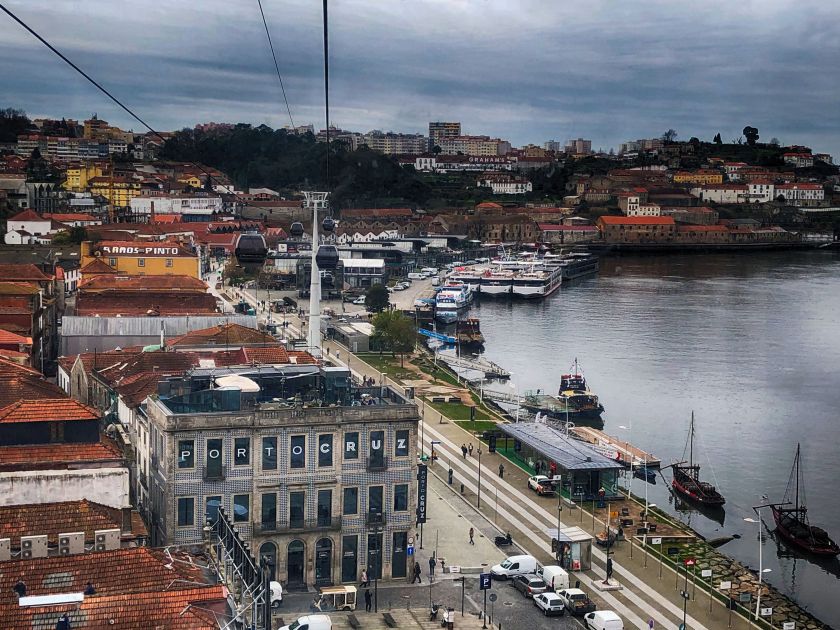
We made our way to the Igreja de São Francisco, our final destination. The gothic exterior of this 13th century church is misleading. Inside, over 120 pounds of gold gilt cover virtually every surface. Photography of the interior isn’t allowed, but I found a photo to accompany my exterior photo.
We enjoyed our time in this great city. It’s bustling city with a long history and plenty to keep you interested. Our visit just touched the surface and I hope that we’ll be able to spend more time in Porto in the future.


